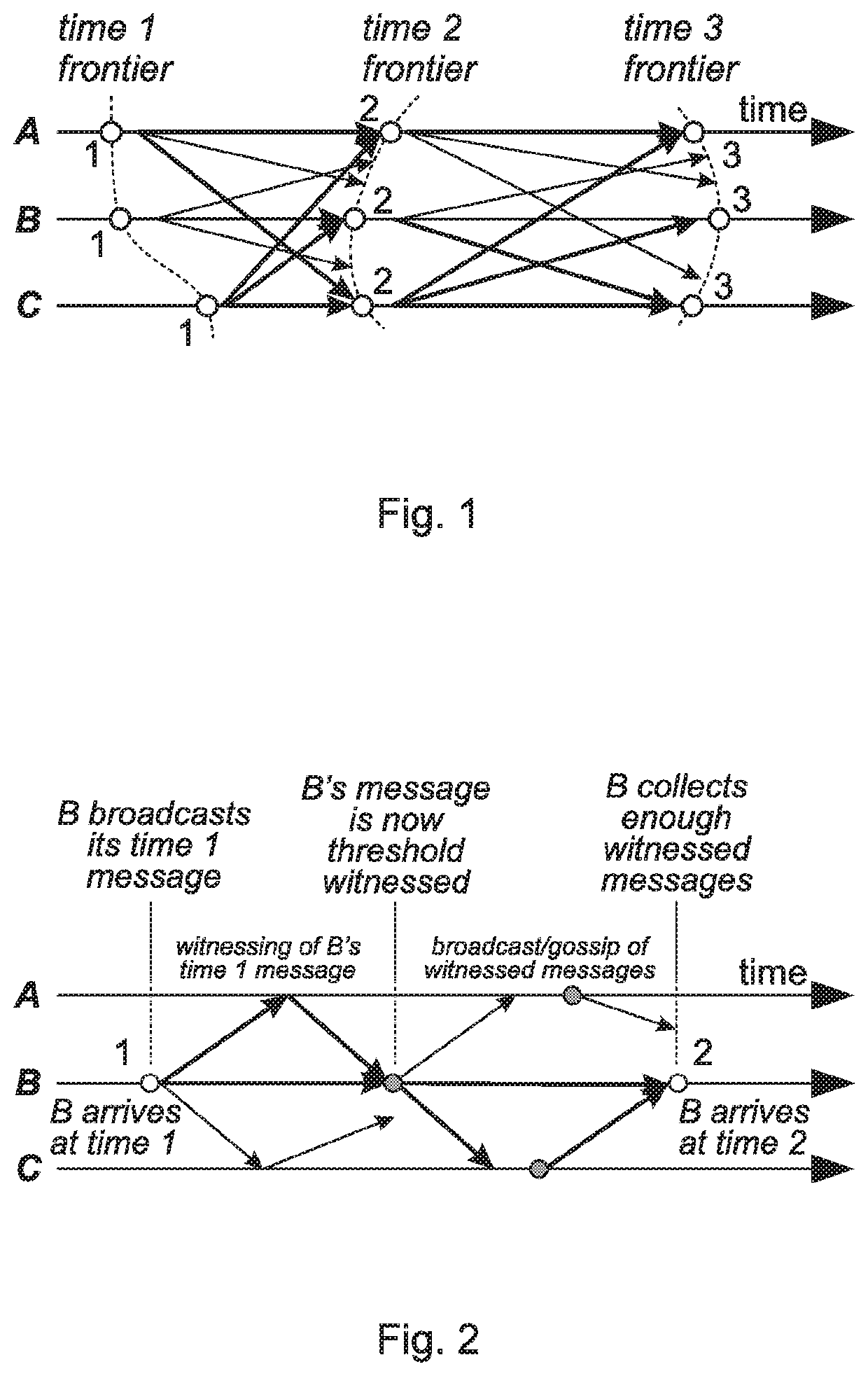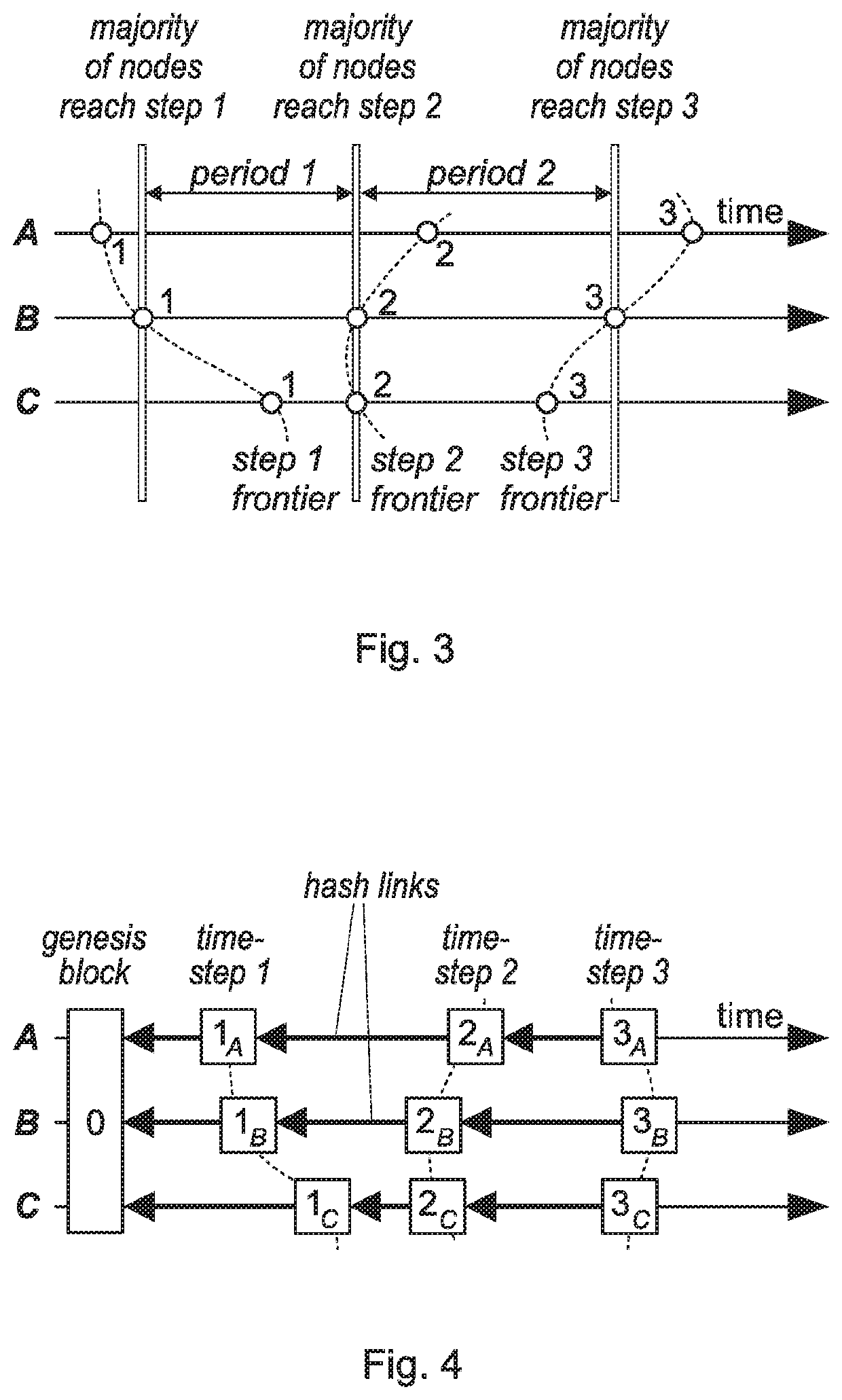Asynchronous distributed coordination and consensus with threshold logical clocks
- Summary
- Abstract
- Description
- Claims
- Application Information
AI Technical Summary
Benefits of technology
Problems solved by technology
Method used
Image
Examples
Embodiment Construction
INVENTION
[0097]We now introduce Threshold Logical Cocks (TLC) and explore their properties informally, emphasizing simplicity and clarity of exposition for now. For now we consider only the non-Byzantine situation where only the network's scheduling of message delivery, and none of the participating nodes themselves, may exhibit adversarial behavior.
4.1 Time Advancement in Basic TLC
[0098]TLC assumes at the outset that we have a well-defined set of participating nodes, each of which can send messages to any other participant and can correctly authenticate messages received from other participants (e.g., using authenticated TLS. Further, in addition to the number n of participants and their identities, TLC requires a message threshold, tm, as a configuration parameter defining the number of other participants a node must “hear from” during one logical time-step before moving on to the next. For simplicity we will assume that 1m
[0099]At any moment in real-world time, TLC assigns eac...
PUM
 Login to View More
Login to View More Abstract
Description
Claims
Application Information
 Login to View More
Login to View More - R&D
- Intellectual Property
- Life Sciences
- Materials
- Tech Scout
- Unparalleled Data Quality
- Higher Quality Content
- 60% Fewer Hallucinations
Browse by: Latest US Patents, China's latest patents, Technical Efficacy Thesaurus, Application Domain, Technology Topic, Popular Technical Reports.
© 2025 PatSnap. All rights reserved.Legal|Privacy policy|Modern Slavery Act Transparency Statement|Sitemap|About US| Contact US: help@patsnap.com



